#Arnold Hauser
Explore tagged Tumblr posts
Text

OPINIÓN GRUPAL:
Arnold Hauser en su obra “El concepto de espacio y la arquitectura manierista” nos brinda un enfoque impersonal de cómo fue el arte y arquitectura del manierismo. Tomando en cuenta que Hauser es un sociólogo marxista, logro elaborar una obra sin dar un juicio propio y llenarla de sesgos, sino, consiguió mostrar al lector de forma critica cómo surgió el manierismo, cuáles fueron las circunstancias del momento que llevo a que este surgiera, cual fue la valoración de la sociedad y que caracterizó este movimiento artístico y arquitectónico.
El autor logra a través de la lectura comparar perfectamente obras de arquitectura manierista, para ello se apoya en el renacimiento, ya que con este puede establecer claramente las diferencias en categorías (ya sea fachadas, proporción, espacio, etc) y las sensaciones de las obras hacía a la persona que lo estuviera observando. El Palazzo Farnese de Bramante y las escaleras Laurencianas de Miguel Ángel son algunos ejemplos característicos que ofrece en la lectura. Asimismo, hace mención de Giulio Romano como uno de los exponentes del manierismo.
Dentro del grupo de trabajo las conclusiones fueron bastante diversas debido a que Arnold no nos deja una conclusión concisa y clara sobre si este movimiento es positivo o negativo, ya que algunos lectores pueden experimentar un cierto desprecio por parte del autor hacia el manierismo, mientras otros pueden apreciar el esfuerzo del autor por ser lo más valorativo posible. Lo que si queda deja claramente reflejado el autor es que el manierismo en su época a pesar de las exageradas ornamentaciones que presentaba eran perfectas junto con todo este movimiento artístico, debido a la influencia de Miguel Angel, su ausencia y sobretodo la situación en que se encontraba todo alrededor.
OPINIÓN PROPIA:
Esta obra de Arnold Hauser la compro debido a que ya de por si este movimiento artístico y arquitectónico del manierismo me gustó bastante, pero la forma de Arnold de situarse en el momento, expresar cómo se sienten las obras hacía una persona y social, la manera en cómo comparaba obras manieristas con el renacimiento es algo que me atrapó totalmente, porque no daba una opinión propia, sino lo expresaba de manera como sociólogo, algo que me encantó. Al final nunca sentí una crítica por parte del autor, mas bien nos da la independencia de hacerlo como lector ya dándonos los puntos y vistas de las personas de la época
OPINIÓN FORMA EVALUATIVA:
Realmente esta manera de aprender historia a través de este tipo de evaluaciones me atrapan totalmente, porque hace que me palpe de información que yo mismo pude investigar y lo más importante es dar mi propia opinión tratando de ser lo mas crítico posible, por mi parte le doy un 10/10 porque la forma evaluativa tradicional no me gusta y siento por parte propia que no aprendo casi.
0 notes
Text

Total Recall (1990)
#1990#film#movie#science fiction#Total Recall#Sharon Stone#Lori Quaid#Arnold Schwarzenegger#Douglas Quaid#Carl Hauser#Rachel Ticotin#Melina#Mars#Philip K. Dick
207 notes
·
View notes
Text
QUESTION: Who is your favorite actor? INTERVIEW GUY: Arnold, Sly, your mom . . . just playin', guy. . . . ACTUAL BEN: Morgan Freeman, Denzel Washington, Benicio Del Toro, Sean Penn, Meryl Streep, Cole Hauser, Casey Affleck, Jay Lacopo, Vince Vaughn, Joaquin Phoenix, Don Cheadle, the brothers Wilson, Ed Norton, Nicolas Cage, Robert De Niro, Marlon Brando, Zeljko Ivanek, Dennis Franz, Julianne Moore, Steve Buscemi, Frances McDormand—there are really a ton of actors I think are great and whom I admire. And I honestly believe after seeing The Talented Mr. Ripley and All the Pretty Horses that Matt Damon is one of, if not the, finest young actor around. INTERVIEW GUY: That Ripley thing, that's a gay picture, right? ACTUAL BEN: Well, no, it's not. . . .
— From Ben Affleck's self-interview in Premiere (January/February 2000).
#ben affleck#matt damon#matt & ben#casey affleck#the talented mr. ripley#all the pretty horses#ben appreciating matt#on homosexuality#quote#2000#originals
27 notes
·
View notes
Text
What has been said about Beethoven's last quartets — that in fact no one who pretends to be thoroughly familiar with them really understands them — could be asserted about all great works of art.
The aura of impenetrability and the feeling of total self-reference is part of their paradox.
- Arnold Hauser, The Power of Art
11 notes
·
View notes
Text
toymaker theme
[toymaker theme]


for @seraphim-coinz 's event, prompt two !
partnered with our other blogs @dollilian, @objectumluv, @systiveboxes, @skelatomy

(nick) names:
arnold, auburn barclay, braegan/breagan, bozicasoz carter, citroen, cosmo, crescent, cacacnik
dinky gepetto, giocattolaia, giocattolaio hamley, hasbro, hauser/hausser, hrackarstvo
igracka jatekkeszito mattel, mettoy
oyuncakci, oynayjy pelistokceker spillsaachen
tonmakep, tegannwr wosewera zabawkarz

1st p prns: i/me/my/mine/myself
hi/hase/hasbry/hasbrine/hasbroself mi/make/maky/makine/makerself mi/matte/matty/matteline/mattelself ti/toye/toy/toyine/toyself

2nd p prns: you/your/yours/yourself
ho/hasbr/hasbrs/hasbrself mo/maker/makers/makerself mo/matteler/mattelers/mattelerself to/toyer/toyers/toyerself

3rd p prns: they/them/theirs/themself
has/bro, has/hasbro, ha/hasbro, hasbro/toys, hasbro/hasbros ma/ker, mak/er, make/maker, ma/maker, maker/makers, mat/tel, matt/el, mattel/mattels to/toy, to/oy, toy/toys, toy/maker

titles:
the toymaker, the maker of toys, the immortal toymaker, the children's toy maker
*one who makes fantastical toys, one who makes childrens toys, one who makes living toys

*one can be replaced by any prn
#npts#npt#npt list#npt pack#npt suggestions#npt ideas#npt blog#id pack#toymaker#toy maker#toymaker npts#toymaker theme#1st person neopronouns#2nd person neopronouns#3rd person pronouns#serachurch728
13 notes
·
View notes
Text
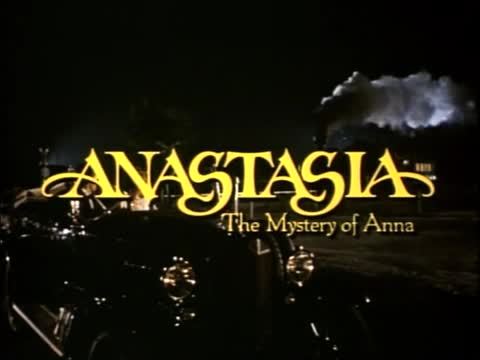
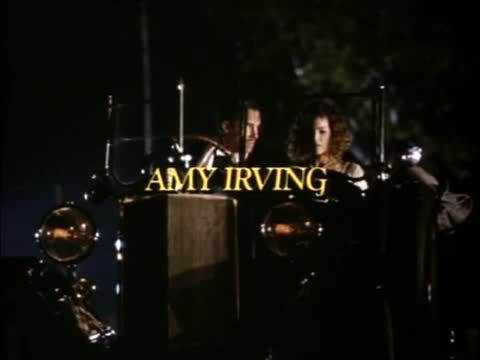
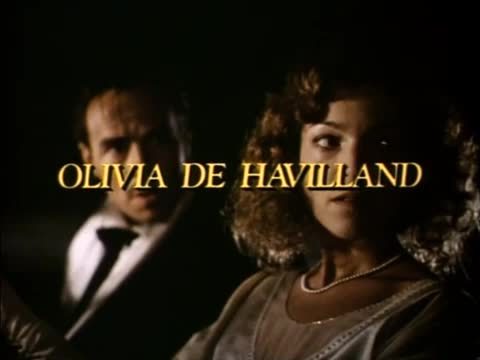
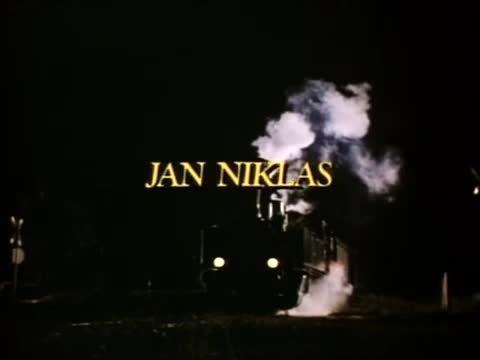
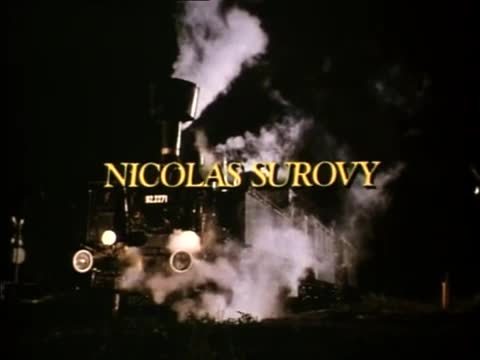


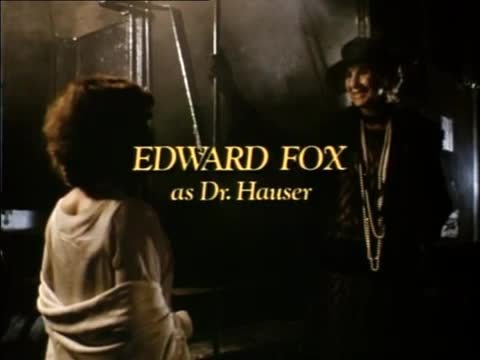
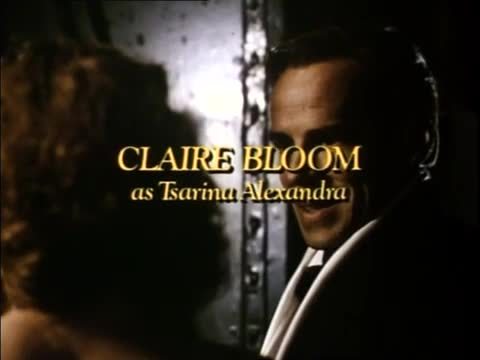
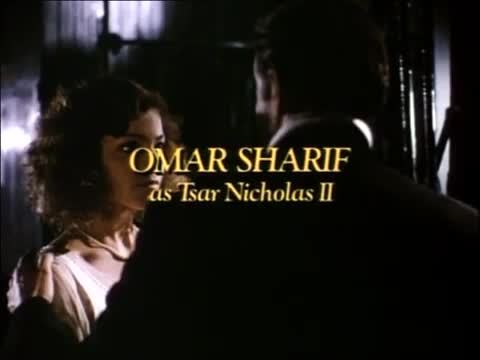
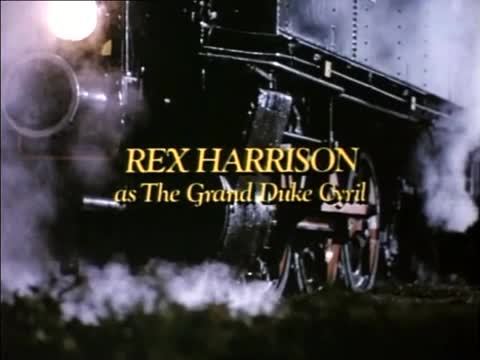
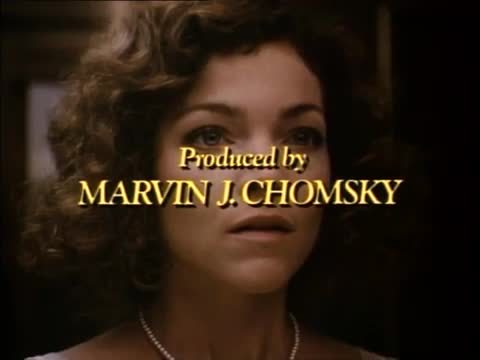

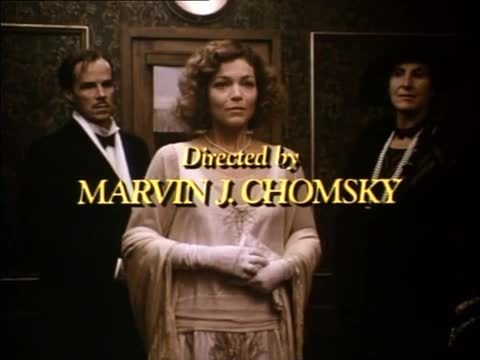
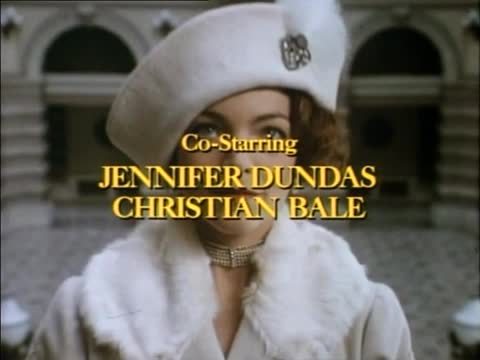
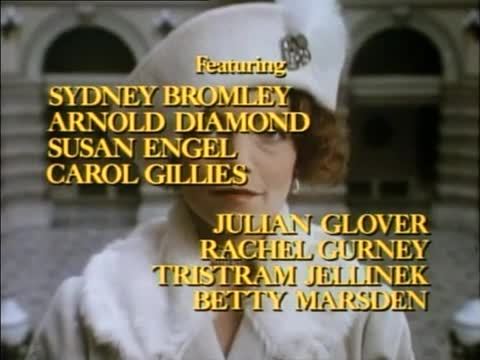
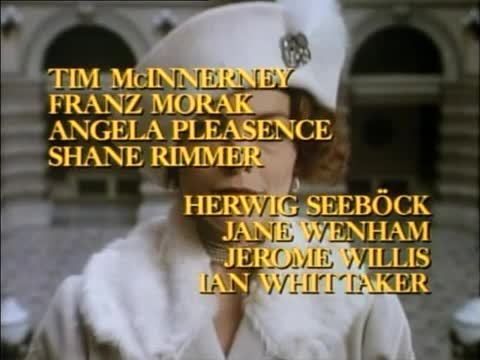

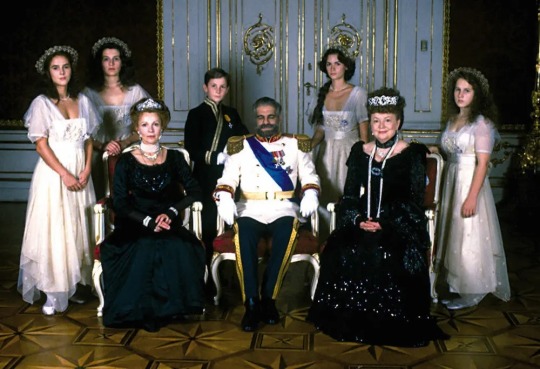
Anastasia: The Mystery of Anna - USA - December 7-8, 1986
Biography (2 episodes)
Running Time: 195 minutes total
Stars:
Amy Irving as Anastasia "Anna" Anderson
Olivia de Havilland as Dowager Empress Maria Feodorovna
Rex Harrison as Grand Duke Cyril Romanov (His last screen appearance)
Jan Niklas as Prince Erich
Nicolas Surovy as Serge Markov
Susan Lucci as Darya Romanoff
Elke Sommer as Isabel Von Hohenstauffen
Edward Fox as Dr. Hauser
Claire Bloom as Czarina Alexandra
Omar Sharif as Czar Nicholas II
Jennifer Dundas as Grand Duchess Anastasia
Christian Bale as Tsarevich Alexei
Andrea Bretterbauer as Sonya Markov
Sydney Bromley as Herbert
Arnold Diamond as Dr. Markov
Carol Gillies as Sasha
Julian Glover as Colonel Eugene Kobylinsky
Rachel Gurney as Grand Duchess Victoria
Betty Marsden as Princess Troubetskaya
Tim McInnerny as Yakovlev
Angela Pleasence as Clara
Julia Koehler as one of the three sisters
#Anastasia: The Mystery of Anna#TV#Biography#USA#1986#1980's#Amy Irving#Olivia de Haviland#Rex Harrison#Jan Niklas
7 notes
·
View notes
Text

Sanatın Toplumsal Tarihi, Cilt 1: Tarih Öncesi Çağlardan Orta Çağ'a (İng. Social History of Art, Volume 1: From Prehistoric Times to the Middle Ages), Marksist sanat tarhçisi Arnold Hauser'in kült kitabı. Sanat tarihi disiplini bilindiği gibi idealist felsefe ile oldukça içli dışlı bir disiplindir. Hauser ise bir materyalist ve Marksist olarak bu idealist yazına karşı dört ciltlik Sanatın Toplumsal Tarihi'i yazar. Bu ilk ciltte Neolitik dönemden Antik çağa ve Orta Çağ'a kadar olan bölümü yorumlamış. Oldukça zorlu bir işin altına girmiş olsa da okuması keyifli bir sanat tarihi eseri.
4 notes
·
View notes
Text
names, mostly surnames (1)
let me apologise for this partial list of names in the library, titles available on request...
, Adorno, horkheimer, anderson, aristotle, greta adorno, marcuse, agamben, acampora and acampora, althussar, lajac kovacic, eric alliez, marc auge, attali, francis bacon (16th c), aries, aries and bejin, alain badiou, beckett, hallward, barnes, bachelard, bahktin, volshinov, baudrillard, barthes, john beattie, medvedev, henri bergson, Jacques Bidet, berkman, zybmunt bauman, burgin, baugh, sam butler, ulrich beck, andrew benjamin and peter osbourne, walter benjamin, ernest bloch, blanchot, bruzins, bonnet, karin bojs, bourdieu, j.d. bernal, goldsmith, benveniste, braidotti, brecht, burch, victor serge, andre breton, judith butler, malcolm bull, stanley cohen, john berger, etienne balibar, david bohm, gans blumenberg, martin buber, christopher caudwell, micel callon, albert camus, agnes callard, castoridis, claudio celis bueno, carchedi and roberts, Marisol de la cadena, mario blaser, nancy cartwright, manual castells, mark currie, collingwood, canguilhem, mario corti, stuart hall, andrew lowe, paul willis, coyne, stefan collini, varbara cassin, helene cixous, coward and ellis, clastres, carr, cioren, irving copi, cassirer, carter and willians, margeret cohen, Francoise dastur, guy debord, agnes martin, michele bernstein, alice, lorraine dastun, debaise, Gilles Deleuze, deleuze and gattari, guattari, parnet, iain mackenzie, bignall, stivale, holland, smith, james williams, zourabichvili, paul patton, kerslake, schuster, bogue, bryant, anne sauvagnargues, hanjo berresen, frida beckman, johnson, gulliarme and hughes, valentine moulard-leonard, desai, dosse, duttman, d’amico, benoit peters, derrida, hinca zarifopol-johnston, sean gaston, discourse, mark poster, foucault, steve fuller, markus gabrial, rosenbergm milchamn, colin jones, van fraasen, fekete, vilem flusser, flahault, heri focillon, rudi visker, ernst fischer, fink, faye, fuller, fiho, marco bollo, hans magnus enxensberger, leen de bolle, canetti, ilya enrenberg, thuan, sebastion peake, mervyn peake, robert henderson, reimann, roth, bae suah, yabouza, marco bellatin, cartarescu, nick harkaway, chris norris, deLanda, regis debray, pattern and doniger, soame jynens, bernard williams, descartes, anne dufourmanteille, michelle le doeuff, de certaeu , deligny, Georges Dumezil, dumenil and levy, bernard edelman, victorverlich, berio, arendt, amy allen, de beauvior,hiroka azumi, bedau and humphreys, beuad, georges bataille, caspar henderson, chris innes, yevgeny zamyatin, louis aragon, italo calvino, pierre guirard, trustan garcia, rene girard, paul gilroy, michal gardner, andre gorz, jurgan gabermas, martin gagglund, beatrice hannssen, jean hyppolyte, axel honneth, zizek and crickett, stephen heath, calentin groebner, j.b.s. haldane, ian hacking, david hakken, hallward and oekken, haug, harman, latour, arnold hauser, hegel, pippin, pinksrd, michel henry, louis hjelmslev, gilbert hardin, alice jardine, karl jaspers, suzzane kirkbright, david hume, thomas hobbes, barry hindus, paul hirst, hindess and hirst, wrrner hamacher, bertrand gille, julien huxley, halavais, irigaray, ted honderich, julia kristeva, leibnitz, d lecourt, lazzaroto, kluge and negt, alexander kluge, sarah kofman, alexandre kojeve, kolozoya, keynes, richard kangston, ben lehman, kant, francous jullien, fred hameson, sntonio rabucchi, jaeggi, steve lanierjones, tim jackson, jakobson, joeseph needham, arne de boever, marx and engels, karl marx, frederick engels, heinrich, McLellen , maturana and varuna, lem, lordon, jean jacques-lecercle, malabou, marazzi, heiner muller, mary midgley, armand matterlart, ariel dorfman, matakovsky, nacneice, lucid, victor margolis, narco lippi, glen mazis, nair, william morris, nabis, jean luc nancy, geoffrey nash, antonio negri, negri and hardt, hardt, keith ansell pearson, pettman, william ruddiman, rheinberger, andre orlean, v.i. vernadsky, rodchenko, john willet, tarkovsky, william empson, michel serres, virillio, semiotexte, helmut heiseenbuttel, plessner, pechaux, raunig, retort, saito, serres, dolphin, maria assad, spinoza, bernard sharratt, isabelle stengers, viktor shklovsky, t. todorov, enzo traverso, mario tronti, todes, ivan pavlov, whitehead, frank trentmann, trubetzkoy, rodowink, widderman, karl wittfogel, peter handke, olivier rolin, pavese, robert walser, petr kral, von arnim, sir john mennis, ladies cabinet, samuel johnson, edmund spenser, efy poppy, yoko ogawa, machado, kaurence durrell, brigid brophy, a. betram chandler, maria gabriella llansol, fowler, ransmayr, novick, llewellyn, brennan, sean carroll, julien rios, pintor, wraxall, jaccottet, tabucchi, iain banks, glasstone, clarice lispector, murakami, ludmilla petrushevskaya, motoya, bachmann, lindqvist, uwe johnson, einear macbride, szentkuthy, vladislavic, nanguel, mathias enard, chris tomas, jonathan meades, armo schmidt, charles yu, micheal sorkin, vilas- matas, varesi, peter weiss, stephenson, paul legrande, virginie despentes, pessoa, brin, furst, gunter trass, umberto eco, reid, paul,klee, mario levero, hearn, judith schalansky, moorhead, margert walters, rodchenko and popova, david king, alisdair gray, burroughs, ben fine, paul hirst, hindess, kapuscinski, tchaikovsky, brooke-rose, david hoon kim, helms, mahfouz, ardret, felipe fernandez-armesto, young and tagomon, aronson, bonneuil and fressoz, h.s. bennett, amy allen, bruckner brown, honegger, bernhard, warren miller, albert thelen, margoy bennett, rose macauley, nenjamin peret, sax rohmer, angeliki, bostrom, phillip ball, the invisible commitee, bataille and leiris, gregory bateson, michelle barrett and mary mcintosh, bardini, bugin, mcdonald, kaplan, buck-moores, chesterman and lipman, berman, cicero, chanan, chatelet, helene cixous, iain cha,bers, smirgel, norman clark, caird, camus, clayre, chomsky, critchley, curry, swingewood, luigi luca cavelli-sforza, clark, esposito, doerner, de duve, alexander dovzhenko, donzelot, dennet, doyle, burkheim, de camp, darwin, dawkins, didi-huberman, dundar, george dyson, berard deleuze, evo, barbara ehrenrich, edwards, e isenstein, ebeking, economy and society, esposito, frederick gross, david edgeerton, douglas, paul,feyerband, jerry fodor, gorrdiener, tom forester, korsgaard, fink, floridi, elizabeth groscz, pierre francastel, jane jacobs, francois laplantinee, gould, galloway, goux, godel, grouys, genette, gil, kahloo, giddens, martin gardner, gilbert and dubar, hobbes, herve, golinski, grotowski, glieck, hayles, heidegger, huxley, eric hobsbawn, jean-louis hippolyte, phillip hoare, tim jordan, david harvey, hawking, hoggart, rosemary jackson, myerson, mary jacobus, fox keller, illich, sarah fofman, sylvia harvey, john holloway, han, jaspers, yuk hui, pierre hadot, carl gardner, william james, bell hooks, edmond jabes, kierkegaard, alexander keen, kropotkin, tracy kidder, mithen, kothari and mehta, lind, c. joad, bart kosko, kathy myers, kaplan, luce irigaraay, patrick ke iller, kittler, catherine belsey, kmar, klossowski, holmes, kant, stanton, ernesto laclau, jenkins, la mouffe, walter john williams, adam greenfield, susan greenfield, paul auster, viet nguyen, jeremy nicholson, andy weir, fred jameson, lacoue-labarthe, bede, jane gallop, lacan, wilden, willy ley, henri lefebvre, rob sheilds, sandra laugier, micheal lowy, barry levinson, sylvain lazurus, lousardo, leopardo, jean-francois lyotard, jones, lewontin, steve levy, alice in genderland, laing, lanier, lakatos, laurelle, luxemburg, lukacs, jarsh, james lovelock, ideologu and consciousness, economy and society, screen, deleuze studies, deleuze and guattari studies, bruno latour, david lapoujade, stephen law, primo levi, levi-strauss, emmanuel levinas, viktor schonberger, pierre levy, gustav landaur, robin le poidevin, les levidow, lautman, david cooper, serge leclaire, catherine malabou, karl kautsky, alice meynall, j.s. mill, montainge, elaine miller, rosa levine-meyer, jean luc marion, henri lefebrve, lipovetsky, terry lovell, niklas luhmann, richard may, machiavelli, richard mabey, john mullzrkey, meyerhold, edward braun, magri, murray, nathanial lichfield, noelle mcafee, hans meyer, ouspensky, lucretius, asa briggs, william morris, christian metz, laura mulvey, len masterman, karl mannheim, louis marin, alaister reynolds, antonio munoz molina, FRAZER, arno schmidt, dinae waldman, mark rothko, cornwall, micheal snow, sophie henaff, scarlett thomas, matuszewski, lillya brik, rosamond lehman , morris and o’conner, nina bawden, cora sandel, delafield, storm jameson, lovi , rachel ferguson, stevie smith, pat barker, miles franklin, fay weldon, crista wolff, grace paley, v. woolf, naomi mitchinson, sheila rowbotham, e, somerville and v ross, sander marai, jose saramago, strugatsky, jean echenoz, mark robso, vladimir Vernadsky, chris marker, Kim Stanley Robinson, mario leverdo, r.a. lafferty, martin bax, mcaulay, tatyana tolstaya, colinn kapp, jonathan meades, franco fortini, sam delany, philip e high, h.g. adler, feng menglong, adam thorpe, peeter nadas, sam butler, narnold silver, deren, joanna moorhead, leonara carrington, de waal, hartt, botticelli, charbonneau, casco pratolini, murakami, aldiss, guidomorselli, ludmilla petrushevskaya, ,schulz, de andrade, yasushi. inoue, renoir, amelie nothomb, ken liu, prynne, ANTIONE VOLODINE, luc brasso, angela greene, dorothea tanning, eric chevillard, margot bennett w.e. johns, conan doyle, samuel johnson, herge, coutine-denamy, sterling, roubaud, sloan, meiville, delarivier manley, andre norton, perec, edward upward, tom mcCarthy, magrinya, stross, eco, godden, malcolm lowry, derekmiller, ismail kadare, scott lynch, chris fowler, perter newman, suzzana clarke, paretky, juliscz balicki, stanislaw maykowski, rajaniemi, william morris, c.k. crow, ueys, oldenburg, mssrc chwmot, will pryce, munroe, brnabas and kindersley, tromans, lem, zelazny, mitchinson, harry Harrison, konstantin tsiolkovsky, flammerion, harrison, arthur c clarke, carpenter, john brunner, anhony powell, ted white, sheckley, kristof, kempowski, shingo, angelica groodischer, rolin, galeanom dobin, richard holloway, pohl and kornbulth, e.r. eddison, ken macleodm aldiss, dave hutchinson, alfred bester, budrys, pynchon, kurkov, wisniewski_snerg, , kenji miyazawa, dante, laidlaw, paek nam_nyong, maspero, colohouquon, hernandez, christina hesselholdt, claude simon, bulgaakov, simak, verissimo, sorokin, sarraute, prevert, celan, bachmann, mervin peake, olaf stapledon, sa rohmer, robert musil, le clezio, jeremy cooper, zambra, giorgio de chirico, mjax frisch, gawron, daumal, tomzza, canetti, framcois maspero, de quincy, defoe, green,, greene, marani, bellatin, khury, tapinar,, richmal crompton, durrenmat, fritz, quintane, volponi, nanni balestrini, herrera, robert walser, duras, peter stamm, m foster, lan wright, their theotokism agustn de rojas, paul eluard, sturgeon, hiromi kawakomi, sayaka murata, wolfgang hilbig, hmilton, z zivkovic, gersson, mallo, bird, chaudrey, Toussaint, Can Xue, Lewis Mumford, neitzsche, popper, zizek, scott westerfield, rousseau, lewis munford, tod may, penelope maddy, elaine marks, isabelle courtivron, leroi, massumi, david sterritt, godard, millican and clark, macabe, negri, mauss, maiimon, patrica maccormack, moretti, courtney humphries, monad, moyn, malina, picasso, goldman, dambisa moyo, merleau-ponty, Nicholson, knobe and nichols, poinciore, morris, ovid, ming, nail, thomas more, richard mabey, macfarlane, piscator, louis-stempal, negrastini, moore, jacquline rose, rose and rose, ryle, roszick, rosenburg, ravisson, paul ricoer, rossler, chantl mouffe, david reiff, plato, slater, rowlands, rosa, john roberts, rhan, dubios and rousseau, ronell, jacques ranciere, mallarme, quinodoz, peterpelbert, mary poovey, mackenzie, andrew price, opopper, roger penrose, lu cino parisi, gavin rae, parker and pollack, mirowoski, perniola, postman, panofsky, propp, paschke and rodel, andre pickering, massabuau, lars svenddsen, rosenberg and whyte, t.l.s. sprigger, nancy armstrong, sallis, dale spender, stanislavski, vanessa schwartz, shapin and shaeffer, sally sedgewick, signs, gabriel tarde, charles singer, adam smith, simondon, pascal chablt, combes, jon roffee, edward said, sen, nik farrell fox, sartre, fred emery, scholes, herbert spencer, ruth saw, spinoza, raphael sassower, henry sidgewick, peter singer, katarznya de lazari-radek, piaget, podach, van der post, on fire, one press, melossi and pavarini, pearl and mackenzie, theirry paquot, tanizaki, RHS, stone, richard sennett, graham priest, osborn and pagnell, substance, pedrag cicovacki, schilthuizen, susan sontag, gillian rose, nikolas rose, g rattery taylor, rose, rajan, stuart sim, max raphael, media culture and society, heller- roazen, rid, root, rossi, gramsci, showstack sasson, david roden, adrew ross, rosenvallion, pauliina remes, pkato, peter sloterdijk, tamsin shaw, george simmel, bullock and trombley, mark francis, alain supiot, suvin, mullen and suvin, stroma, maimonides, van vogt, the clouds on unknowing, enclotic, thesis 11, spivack, kate raworth, h.w. richardson, hillial schwartz, stern, rebecca solnit, rowland parker, pickering, lukacs, epicriud, epicetus, lucrtious, aurelies, w.j.oates, thor Hanson, thompson, mabey, sheldrake, eatherley, plato, jeffries, dorothy richardson, arno schmidt, earl derr biggersm mary borden, birrel, arno schmidt, o.a. henty, berhard steigler, victor serge, smith, joyce salisbury, pauer-studer, timpanaro, s helling, schlor, norman and welchman, searle, emanuele severarimo, tomasello, sklar, judith singer, walmisley, thomas malthus, quentin meilassoux, alberto meelucchi, mingione, rurnbull, said, spufford and uglow, zone, j.j.c. smartt, sandel, skater, songe-moller, strawson, strawson, strawson, raymond tallis, toscano, turkle, tiqquin, diggins, j.s. ogilivy, w.w. hutchings, rackgam, deiter roth, dowell, red notes, campbell and pryce,osip brik, lilya brik, mayakovsky, zone, alvin toffker, st exupery, freya stark, warson, walsh, wooley, tiles and oberdick, timofeeva, richardson, marcuse, marder, wright, ushenko, tolson, albebers and moholy- nagy, alyce mahon, gablik, burnett, barry, hill, fontaine, sanuel johnson,justin, block, taylor, peter handke, jacques rivette, william sansom, bunuel and dali, tom bullough, aldius huxley, philip robinson, spendor, tzara, wajcman, peter wohlleben, prigogini, paolo virno, jeremy tunstall, theweliet, taussig, tricker, vince, thomss, williams, vogl, new german critique, e.p. thompson, jean wahl, paul virilio, lotringer, christy wampole, verhaeghe, janet wolff, anna kavan, vergara, uexkull, couze venn, barry smart, vico, vatimo, vernant, raoul vaneigem, ibn warraq, vertov, williams, meiksins wood, norbert weiner, peter wollen, h.g. wells, michelle walker, , jeanne waelit walters, shaw and darlen, whorf, ward and dubois, john wright, weinart, wolff, willis, wark, cosima wagner, j. weeks, judith williamson, welzbacher, erik olin wright, wittgenstein, kenny, zeldin, wenders, henry miller, wenkler, arrighi, banks, innes, ushereood, kristeva, john cage, quignard, t.f. powys, siri hustveldt, lem, zelazny, mitchonson, tsilolkovsky, toussaint, heppenstall, garrigasait, de kerangal, haine fenn, jean bloch, geoff ryman, reve, corey, asemkulov, ernaux, gareth powell, cory, deleuze and guattari studies, cse, allain and souvestre, apolinaire, jane austen, john arden, aitmatov, elizabth von arnim, paul auster, abish, ackroyd, tom gunn, lorca, akhmatov, artuad, simon armatige, albahari, felipe alfau, audem auden and soendor, varicco, barrico, bainbridge, asturias, ronan bennett, beckett, paul bowles, jane bowles, celine, bukowski, wu ming, blissert, kay boyle, andrei bely, hugo barnacle, BOLL, isak dineson, karen blikson, brodsky, richmel crompton, berry, barthleme, mary butts, leonora carrington, cage, chevhillard, canetti, cendres, butor, cortazar, danielewski, bertha damon, dyer, havier cercas, micheal dibden, marguerite duras, john donne, duras, durrell, dorrie, Fredric durrenmatt, heppenstahl, eco, enzensberger, evanovich, fruentes, farrell, alison fell, alisdair gray, hollinhurst, andre gide, jean giono, gadda, henry green, grass, andre gorz, william gibson, joyce, gombrowitz, alex laishley, murakami, herve guibert, franz kafka, juenger, junker, kapuscinski, laurie king, kundera, mcewan, ken macleod, ian macdonald, moers, meades, vonda macintyre, nalmstom, maillert, havier marias, jeff noon, anaus nin, david nobbs, peter nadas, nabokov, iakley, oates, raymond queneau, cesare pavese, paterson, ponge, perte, perec, chinery, ovid, genette, kandinsky, robert pinget, richard piwers, rouvaud, sloan, surrralist poetry, ilya troyanov, paul,raabe, julien rios, arne dahl, pierre sollers, rodrigruez, chris ross, renate rasp, ruiz, rulfo, tove jannsson, cabre, vladislavic, tokarczuk, pessoa, jane bowles, calvino, lispector, lydia davis, can xue, sebald, peter tripp, hertzberg, virginia woolf, zozola, sorrentino, higgins, v.w. straka, cogman, freud, jung, klein, winnecot, lacan, fordham, samuels, jung, freud, appignesai, bjp, pullman, magnam, sybil marshall, mccarten, galbraith, jewell, lehmann, levy, levin, jung, spinoza, fairburn, jung, sandler, lacan, laplanche, pontalis, can, xue, klein, cavelli, hawkins, stevens, hanna segal, bollas, welldon, williams, sutherland, buon, symington, morrison, brittain, sidoli, sidoli, holmes, bowlby, winnecott, bollas, kalschiid, malan, patrick casement, anna frued, wittenburg, liz wright, fordham, fairburn, symington, sandler, jung, balint, coltart, west, steiner, van der post, stern, green, roustang, adrew samuels, d.l. sayers, salom, krassner, swain, rame and fo, storr, cogman, hessen, penelope fitzgerald, cummings, richard holloway, juhea kim, glenville, heyer, cartland, kim, cho, atkinson, james, king, audten, hartley, du maurier, bronte, thomas, plath, leon, camillairi, kaussar, fred fargas, boyd, sjowall and wahloo, pheby, morenno-garcia, perrsson, herron, nicola barker, arronovitch, karen lord, stephen frosh, ernest jones, flamm o’brien, shin, mishra, chin jin-young and so on to the warm horizon
8 notes
·
View notes
Text
Parcial II DE HISTORIA II
Manierismo - Arnold Hauser
El manierismo introduce una ambivalencia respecto al espacio. Aunque se aleja de las estrictas reglas del Renacimiento, sigue jugando un papel importante en la obra artística. Sin embargo, esta época provoca una fragmentación del espacio y una tensión entre la profundidad y la superficialidad. Las representaciones espaciales pueden ser irregulares y carecer de continuidad orgánica, lo que refleja una crisis en la percepción del mundo.
Arnold Hauser, fue un destacado historiador del arte y sociólogo húgaro, conocido por su contribución a la comprensión del arte en el contexto de las dinámicas sociales y culturales. Enfatiza el cambio en la percepción del artista durante el manierismo que se caracterizaba por composiciones complicadas, figuras alargadas y poses inusuales, estos elementos permitieron a los artistas explorar conceptos más allá de la simple representación.
Mientras que el Renacimiento se centró en la proporción, la armonía, y la belleza, el Manierismo se aleja de estas nociones, explorando principalmenta la distorsión y la complejidad.
En su lectura menciona a algunos arquitectos importantes y sus obras que no detalla, simplemente las nombra porque demostraban Manierismo, es decir, eran obras que se destacaban en cuanto a distorsión y complejidad.
Hauser también pone énfasis en cómo la arquitectura del manierismo refleja esta complejidad espacial. A través de ejemplos como la columnata de los Uffizi y el vestíbulo de la Laurenziana, destaca cómo estas obras pueden provocar confusión y desasosiego en el espectador.
La arquitectura parece alejarse de la lógica empírica y generar una experiencia de alienación y argumenta que, el manierismo radicaliza esta transformación, convirtiendo lo natural en algo artificial y distante. Esta transformación no solo afecta a la forma en que se percibe el espacio, sino también a la relación entre el espectador y su entorno.
Es así como analiza que, el concepto de espacio evoluciona desde una visión espiritual y estática hacia una preocupación por la representación tridimensional en el Renacimiento, que luego se complica con el manierismo. Su enfoque destaca la interrelación entre la cultura, el espacio y la percepción humana, subrayando cómo estas dinámicas influyen en la creación artística a lo largo de la historia.
Un aspecto resaltante de Arnold hauser, es la manera que la que se dirige al manierismo siendo que en algunas partes parece resaltar las cosas buenas de esta corriente arquitectonica, pero de la misma manera denota las incongruencias e inconvenientes de esta esta forma de arte, pues le parece que al crear edificaciones existen muchas indecisiones a la hora de colocar elementos. Creando de esta manera sensaciones negativas al espectador, esto lo demuestra en las edificaciones que analiza en su lectura, diciendo que en muchas ocasiones la falta de un orden y trabajo sistemático, da como resultado estructuras que son una amalgama de elementos tal vez hasta cierto punto innecesarios, o meramente esteticos sin ningún fin práctico, muchas veces contradiciendo los paradigmas establecidos en la arquitectura renacentista, que cómo es bien sabido respetaba la triada de Vitruvio para la creación de estructuras.
0 notes
Text
Bad Movies Rule Podcast: When Bad Films Produce A Good Podcast

Here's the irony surrounding podcasts about movies: 125 major films are released every year, a number that has decreased over the decades. Yet, there are tens of thousands of movie podcasts. The attraction of doing a movie podcast is easy to understand. Recording and releasing a movie podcast doesn't require a degree, certification, or even extensive knowledge of films.
The setup that has dominated this genre for years goes as such: three dudes in their 20s who were in a fraternity get together over some IPAs and try to be funny while discussing movies. Fart and tit jokes fly, and movie criticism is perhaps secondary to having a good time.
A few of the best movie podcasts include Filmspotting, hosted by Adam Kempenaar and Josh Larsen, which has produced shows since 2005, Verbal Diorama by Em, and Every Single Sci-Fi Film Ever by Ayesha Khan.
Every once in a while, however, a podcast crashes through its own trope and succeeds where others have failed. That movie podcast is Bad Movies Rule.
This excellent movie podcast began in September 2021 and has 170 episodes in the can. The show's premise - unique because it focuses on bad movies like The Razzies - foes as such: "We're a bunch of blue-collar folks that talk about all the movies that don't get enough love. We give out awards to each film and try to determine whether they are actually bad, good-bad, or straight-up good! We hope you will enjoy being part of our group and hanging out with us." This twist on a familiar trope usually separates a podcast from the crowded podverse. Bad Movies Rule is a solid example that found a unique premise and executed its essence with superb discipline. The podcasting team of Bad Movies Rule continues: "We are a group of friends and filmmakers who started a sketch comedy group back in 2005 in Chicago. "That eventually turned into a string of independent movies from 2006 to 2010. We approach talking about films from the standpoint of having made them (on a much smaller scale), and can commiserate with some of the challenges. Bottom line - we love movies, and many of the movies we love wouldn't be called good by the common arbiters of quality (critics/award shows). "We've all gone on and started families, but this podcast became a way to get the band back together and bring in some new friends as well." Understanding who's talking during an episode is a problem except for the most faithful. I listened to ten episodes and was still a bit fuzzy on the shifting lineup. Apparently, the podcast has James Hauser, Joe Goratowski, TWO Ryans - Mattila and Mueller, somebody named Bob, and the lone female named Jen.

Despite the musical chairs hosting situation, the group mesh well together with minimal talking over one another, and each person is free to display their comedy chops, film analysis acumen, and social commentary. Let's face it. Dissecting any form of art that's bad is much more fun than, say, trying to define the genius of the Mona Lisa or a great film like Rear Window by Alfred Hitchcock. The format of the show is simple yet effective. The team's chosen bad movie is dissected scene by scene, with plenty of comedic interludes and caustic comments throughout the scene-by-scene review of the film. At the end of the episode, the team gives out awards for overacting, bad acting, and underrated performances with names for actors that exemplify that skill. For example, the bad acting award is named for Steven Seagal, who, I agree, maybe one of the worst actors of all time. Can we also add Chuck Norris to that list? Some of my favorite episodes include the January 2, 2024, show about Jaws 2. In the episode, the co-hosts imagine what the film would be like if Arnold Schwarzenegger played one of the teens trapped in the raft and in danger of becoming a shark snack. With their talents on full display, all the co-hosts break out their "Arn-old" impersonations, and, as TV Guide used to write, hilarity ensued. In the Tremors 3 episode on December 22, 2023, the co-hosts ridicule the silly six million-dollar budget, which the producers seemingly wasted on a few special effects, as the co-hosts poke copious holes in the ludicrous plot and reuse of the footage from earlier films in the franchise to save money. The episode from March 2023 on the 1986 film Cobra with Sylvester Stallone is a can't-miss. It's Stallone with a matchstick in his mouth, which doesn't help his muddled diction and sunglasses that he wears day and night. In a welcome departure in January 2024, the show actually reviewed an excellent movie—Predator —which was a special preview of the first episode of their Patreon-exclusive show, Good Movies Rule, which originally aired on June 1st, 2023. What I like about this movie podcast include:
The co-hosts have a genuine affection for one another
Unlike some movie podcasts, the co-hosts raise the level of wit and humor above that of the middle-school level.3. The co-hosts invest their time in studying and assessing these bad films and explaining why they are so bad.
The show had a "good nose" for bad films that were ripe for the peeling.
The awards they give out for acting in these flicks are both silly and well-scrutinized. Plus, making fun of Putin's buddy, Seagal, the actor, is deliciously satisfying. What I also like about the show is that the hosts do not take themselves too seriously. This comment is on their website." From the beginning, we've been very honest about the quality of our show. You can listen….but it's not good" Check out Bad Movies Rule. The movies are often so bad, and the podcast is so good.
1 note
·
View note
Text
Arnold Hauser-Sozialgeschichte der Kunst & Literatur-Ungekürzte Sonderausgabe in einem Band.Dieses Werk ist die erste wesentliche Soziologie der Kunst, die wir kennen. Wer sich über die Wandlungen der sozialen Stellung des Künstlers unterrichten will oder über die Rolle, welche die jeweils herrschenden Schichten in ihrer Beziehung zu den Künsten einnehmen, wer sich über die Herkunft des sozialen Romans in England und Rußland orientieren will oder über die Wandlungen der Boheme, wird eine Fülle wichtiger Erkenntnisse erlangen.Das Buch ist altersbedingt etwas in die Jahre gekommen, dieses bezieht sich aber nur auf die vergilbte Farbe die auf den einzelnen Buchseiten erkennbar ist. Dennoch ist das Buch sehr gut erhalten und die Seiten sehr gut lesbar. Der Schutzumschlag weißt altersbedingte Spuren auf.
0 notes
Text

Our extensive variety of brands consists of household names like Siemens, Bosch, Allen Bradley, and Schneider, alongside specialized manufacturers such as Alfa Laval, Furuno, and Yokogawa. You'll also find relied on brands like Aastra, ABB, Agastat, Amot Controls, Arnold Magnetics, Autonics, Autronica, Azbil, Azimuth, Baylor, BBC, Bemac, Bodotherm, BQT Solutions, Brannstrom, BW, Carlo Gavazzi, Carrier Controller, Compaq Computer, Consilium, Converter Concepts, Crouzet, Danfoss, Deif, Desautel, Drager, E. Dold & Shone, Electro Matic, Emerson, Endress+Hauser, Enraf Nonius, Ericsson, Fanuc, Fellow Kogyo, Fischer, Fuji Electric, Gai-Tronics, George Kelk, Gestra, Gordian Group, Gresen, Gutor Electronics, H.M. Stein Sohn, Hawe, Hawke, Hewlett Packard, Honeywell, Hydropa Hydrostar, Hyundai, IBM, Idec, Invensys, Johnson Controls, Jrc, JRCS, Jumo, Kaneko Sangyo, Kessler-Ellis Products, Kidde, Klockner Moeller, Kokosha, Kone, Kongsberg, Koyo, Lamarche, Liaanen Helitron, Liebherr, Lilley & Gillie, Lyngso Marine, Maiyo Electric, Man B&W, Marioff, Masibus, Mean Well, Mitsubishi, Mizar, Moeller, Moog Servo Valve, MSA, MTL, Newage Engineers, Nor Control, Norgren, Noris, Notifier, Omron, Opsis, Parker, Pellerin Milnor, Pepperl Fuchs, Phoenix Contact, Pr Electronics, Ram Automations, Rexroth, Riken Keiki, Robertshaw, Ross Hill, SAAB, Sabroe, Saginomiya, Sauer Danfoss, Sauter, Schaffner, Schmersal, Seiko Electric, Shinybow, SMC, Smiths Heimann, Squared, Stahl, Stromberg, Sun Hydraulics, Tamagawa, Terasaki, TRACO POWER, Trafag, Ueda Seisakusho, Ultra Electronics, VAF Instrument, Van Air, Vingtor Stentofon, Wabco, Weidmuller, Wieland, Yamatake, Yokogawa, and York.
0 notes
Text
A boy with an active imagination faces his fears on an unforgettable journey through the night with his new friend: a giant, smiling creature named Dark. Credits: TheMovieDb. Film Cast: Orion (voice): Jacob Tremblay Dark (voice): Paul Walter Hauser Sweet Dreams (voice): Angela Bassett Adult Orion (voice): Colin Hanks Sleep (voice): Natasia Demetriou Unexplained Noises (voice): Golda Rosheuvel Insomnia (voice): Nat Faxon Quiet (voice): Aparna Nancherla Light (voice): Ike Barinholtz Orion’s Mom (voice): Carla Gugino Orion’s Dad (voice): Matt Dellapina Tycho (voice): Nick Kishiyama Hypatia (voice): Mia Akemi Brown Adult Hypatia (voice): Shannon Chan-Kent Richie Panici (voice): Jack Fisher Narrator (voice): Werner Herzog Lisa (voice): Sky Alexis Woman at the Drive-In (voice): Hira Ambrosino Man at the Drive-In (voice): Yoshi Ando Mrs. Spinoza (voice): Larisa Asuaje Irene’s Boss / Cucumber Dentist / Soda / Insomnia Guy 1 (voice): Sean Charmatz Stray Cat / Insomnia Guy 2 (voice): Walt Dohrn Adult Sally (voice): Ren Hanami Irene (voice): Amy Hill Irene’s Daughter / Insomnia Girl (voice): Alyssa Lee Scared Child (voice): Noah McCown Sally (voice): Shino Nakamichi Irene’s Coworker / Mom / Juice Box / Insomnia Teacher (voice): Aliki Theofilopoulos Insomnia Man (voice): Toru Uchikado Film Crew: Writer: Charlie Kaufman Book: Emma Yarlett Director: Sean Charmatz Producer: Peter McCown Executive Producer: Walt Dohrn Executive Producer: Bonnie Arnold Production Designer: Tim Lamb Art Direction: Christine Bian Head of Story: Adam Rosette Head of Animation: Hans Dastrup Sound Re-Recording Mixer: Tim Nielsen Supervising Animator: Nik Ranieri Supervising Animator: Shawn Krause Supervising Sound Editor: Steve Slanec Sound Re-Recording Mixer: Brandon Proctor Sound Re-Recording Mixer: Nathan Nance Original Music Composer: Kevin Lax Original Music Composer: Robert Lydecker Editor: Kevin Sukho Lee Story Artist: Leah Artwick Story Artist: Alex Avagimian Story Artist: Joe Bernados Story Artist: Lyle Nagy Story Artist: Kent Osborne Story Artist: Jordan Rosato Production Coordinator: Janie Kahan Associate Editor: Michael Pedraza Assistant Editor: Dylan Stayman Assistant Editor: Keith Bodmer Assistant Editor: Eric Hendricks Production Coordinator: Claire Liu Production Designer: Timothy Lamb Character Designer: Jesse Aclin Character Designer: Elaine Choi Character Designer: Ryan Matias Character Designer: Joe Pitt Visual Development: Guillaume Fesquet Animation: Emily Tetri Visual Development: Miho Tomimasu Matte Painter: Kevin Turcotte Production Coordinator: Mallory Quagliato Production Assistant: Brittany Ramirez Animation Supervisor: Carla Lutz Animation: Julien Bocabeille Animation: Greg Sharp In Memory Of: Meghan Noyes Production Assistant: Amanda Lennes Line Producer: Ashley Laidlaw Production Manager: Kyle Hancher Finance: Robert Dudban Production Accountant: Mila Montano CG Supervisor: Ryan Munk Animation Supervisor: Ernest Chan Line Producer: Brent Hutchins Production Manager: Candice Ray Production Manager: Kristin Risinger Production Coordinator: Zachary Joel Johnson Production Coordinator: Emily Ryker VFX Supervisor: Brent Tyler Modelling Supervisor: Steven Tarin Rigging Supervisor: Belal Ballout Generalist: Natalie Jimenez Effects Supervisor: Ross Gibson Compositing Supervisor: David Lee-DuVoisin Executive Producer: Andrea Miloro Executive Producer: Adrianna A.J. Cohen Executive Producer: Russell Tracy Jr Line Producer: Natalia Lasota Line Producer: Murali Chinnappa Producer: Ravi Kiran Nunna Production Manager: Charan Paruchuri Production Manager: Kartheek Dugyala Production Manager: Guru Gnasasambandan Production Coordinator: Rahul Gattu Production Coordinator: Sandra Geiben Production Coordinator: Swati Pattnaik Production Assistant: Bandana Panigrahi Production Assistant: Masool Afreen Production Assistant: Neelam Kishan Creative Director: Manoj Menon Modelling Supervisor: Francis Rajeev A. Modelling Supervisor: Rakesh Acharya B. Modeling: Robin Bharat Modeling: Samir Rout Modeling: Suraj Kumar Raut Rigging Superv...
#based on children&039;s book#cat#creatures#dark#fear#fear of the dark#fears#horror for children#magical creature#overcoming fears#Top Rated Movies
0 notes
Text










This week in 1990 TOTAL RECALL was released!
"Baby, You Make Me Wish I Had Three Hands."
In 1988-89 Total Recall was made at a beautiful moment in cinema history. The creators were at the bleeding edge of cinema technology as we know it today. They were some of the first crew members who did mocap,CGI, motion control and of course practical effects and combined them seamlessly and for the most part still hold up. After revisiting it today I had to research the story on how this masterpiece was made and it did not disappoint. Let’s take a trip to Mars and have a Total Recall.
When Ronald Shusett and Dan O'Bannon first started working on the screenplay for this movie back in the 1970s, they realized that the movie would probably be too expensive and difficult to make (by the standards of special effects and budget at the time). They delayed working on the story and instead worked on an idea O'Bannon had about a space monster terrorizing a spaceship crew. This became Alien (1979).
Producer Dino De Laurentiis' who owned the rights, initial vision of the film's hero Douglas Quaid (originally named "Quail")/Carl Hauser was decidedly more in line with Dick's short story: A schlubby office drone who dreams of a more exciting life. With this characterization in mind, his first choice for the part was Richard Dreyfuss. Over time, the desired machismo of the film's leading man increased, prompting suggestions like William Hurt (courtesy of David Cronenberg who was originally set to direct) and Patrick Swayze. Despite the gradual growth of Quaid's imagined virility, there was a limit to how far De Laurentiis was willing to stray from the original character. He insisted that someone like Arnold Schwarzenegger was out of the question for the part and even turned down the Terminator star when Schwarzenegger first expressed interest in the role. Arnold really wanted the role though. He saw an opportunity when De Laurentiis' production company, De Laurentiis Entertainment Group, went bankrupt. The actor convinced Carolco Pictures, with whom he had recently worked on Red Heat, to purchase the rights to Total Recall. The coveted role of Quaid was not the only thing Schwarzenegger won in the transaction: In addition to being welcome to recruit the director of his choice (as a big fan of RoboCop (he was originally going to play the role of Robocop), he picked Paul Verhoeven, Schwarzenegger maintained authority over all creative aspects of the film, script, production, and even elements of distribution.
Paul Verhoeven signed onto the film in the Autumn of 1988. Filming began in Mexico City because of its futuristic architecture. 500 people worked on the film; they built 45 sets that tied up eight sound stages for six months. At the time, Total Recall (1990) was the second most expensive film in history, next to Rambo III (1988). The director also brought in many of his collaborators on RoboCop, including actor Ronny Cox, cinematographer Jost Vacano, production designer William Sandell, editor Frank J. Urioste, and special-effects designer Rob Bottin.
Both the adaptation of the screenplay (written by Piers Anthony) and early drafts of the script had the main character's name as Douglas Quail. The original Philip K. Dick story has the name Quail as well. The film was being made during the administration of President George Bush, in which Dan Quayle as Vice President and it is presumed that this was the reason for the change.
Cinematographer Jost Vacano said this about the production in a American Cinematographer article
“The entire project was a "major challenge" from the more than 35 stage sets to the hundreds of effects shots. Vacano explains, "Normally in films like this you have long sequences that are very straightforward and then you have, as a highlight, effects scenes. This time, effects are everywhere, every time, especially for the ending. When I saw the rough cut about four months after we finished shooting, the last two reels were full of 'scene missing, scene missing, scene missing!' There was nothing there but some music!"
According to Vacano, the really big story of this film is the 35 sets by production designer William Sandell. Eight sound stages filled to capacity four or five different times for 3 to 5 days of shooting each time was a daunting prospect even to the man who shot Never Ending Story and Das Boot. "When you read a script the first time, you don't pay so much attention to the sets. But when you've read it many times, it occurs to you, all this must be happening in a huge place! It's like a city! And it's on Mars! Where will we find a studio so big that we can build a whole city there? A closer look told us that it wasn't just one city. It was a lot of large areas of the colony — part city, part mine, whatever.
"We had a schedule of 80 to 90 days. That meant we could expect to go to a new stage every three to five days. Of course, everyone expected that when we left one stage and moved to the next, it would be all lit and we could start shooting. This was one of the moments I almost lost my confidence."
Would you like to know more? Check out an in-depth article with Jost Vacano form American Cinematographer
https://ascmag.com/articles/total-recall-interplanetary-thriller
All of the crew fell ill due to food poisoning during production, with the exception of Arnold Schwarzenegger and Ronald Shusett. Schwarzenegger escaped because he always had his food catered from the US. This was because three years earlier, he had fallen ill due to drinking tap water in Mexico during production of Predator (1987). As for Shusett, he took extreme health precautions, such as only brushing his teeth with boiled or bottled water and insisting on getting a weekly vitamin B12 shot. Shusett was even mocked by the crew until they all got sick themselves.
Paul Verhoeven and special effects supervisor Rob Bottin had constant disagreements during the making of RoboCop (1987), so it seemed unlikely that they would ever work together again. However, when they saw how good "RoboCop" had turned out, they changed their minds and Verhoeven gave Bottin full freedom to make his own Martian creature designs.
It took 15 puppeteers to control Kuato, whose name is from the Spanish word "cuate" ("twin"). Director Paul Verhoeven said that special makeup effects designer Rob Bottin had made the Kuato puppet look so real that he was approached by two people on the street asking if he (Marshall Bell) was a "real freak" or possibly a semi-born Siamese twin.
When Quaid is going through the items in the silver suitcase, he picks up a stack of fake ID cards. The name on the first ID is Steve Lionetti, who was a production assistant for the movie.
Arnold Schwarzenegger noticed that Michael Ironside was constantly on the phone between takes. When he broached the subject with Ironside, he was told that he was phoning his sister and that she was currently suffering from cancer. Arnold immediately brought Michael to his trailer and they had an hour-long 3-way conversation with Ironside's sister about what exercises she should do and what kinds of foods she should be eating. Ironside has never forgotten Schwarzenegger's kindness and neither has his sister.
The homeless woman who finds and tries to take the briefcase made for Quaid/Hauser tells him, "Fuck you, asshole". Arnold Schwarzenegger said the same thing in The Terminator & Commando
The three-breasted hooker, Mary, was originally supposed to have four breasts, but the producers thought it looked too much like a cow's breasts. Actress Lycia Naff says she found the experience of playing Mary quite humiliating, as if she exposed her real breasts. She says that her smile onscreen was only on the surface, and she was near tears during the shoot. She found the whole thing so degrading that she refused to do any publicity for the movie, even turning down a shot on The Tonight Show with Johnny Carson.
Debbie Lee Carrington (Thumbelina) had starred in Star Wars: Episode VI - Return of the Jedi (1983) as an Ewok. That film was also about rebels fighting an evil empire.
Coca-Cola is the only advertised soft drink on Earth; on Mars, we see ads only for Pepsi.
The scene where the air to the Mars colony is cut off was initially shot with the Martians violently gasping for oxygen. However, this gave the scene an unintentionally comical feeling. It was director of photography Jost Vacano who suggested to have the actors lying down quietly while fighting to survive, in order to give the scene a much more dramatic tone. He remembered how effective this had been when he shot a similar scene in Das Boot (1981) in the same way.
When filming the fight scene between Lori and Melina, director Paul Verhoeven asked second unit director Vic Armstrong to choreograph the fight not as a "cat fight" but more like a martial arts fight, to give the feel of two "warriors" fighting each other and not simply two women. Verhoeven remarks in the DVD commentary that this is probably the first time in a feature film where we see two women fighting each other normally, as opposed to a cat fight. ( I guess he didn’t see much Hong Kong cinema)
Towards the end of filming in Mexico, Paul Verhoeven got so sick from food poisoning that he would have an ambulance nearby on set at all times. In between takes the paramedics would administer fluids and medication so that he could keep directing in spite of his illness.
Composer Jerry Goldsmith had said that he had received some criticism about the movie's score that "the movie had no theme", to which he strongly disagreed, stating that the movie did in fact have a theme, but it wasn't the kind of theme that "people left the theaters whistling after". Goldsmith had modeled some of the movie's score after the score from Conan the Barbarian (1982) composed by Basil Poledouris.Jerry Goldsmith considered Total Recall to be one of his best film scores.
Although never mentioned in the film, the cover of the VHS edition mentions that it takes place in 2084 AD. This has also been confirmed by Paul Verhoeven; he mentioned Blade Runner (1982) as an example of a movie with a far too advanced depiction of the future for the time period it is supposed to take place in (which was 2019). He wanted to avoid that for Total Recall by situating it much further into the future.
ERIC BREVIG (visual effects supervisor) and ALEX FUNKE (director of miniature photography)
are some of real heroes of this production, reminiscent of the early I.L.M days on Star Wars, Dream Quest rose to the challenge delivering groundbreaking visual effects inventing new methods and mixing them with tried and true practical effects such as matte paintings.
ERIC BREVIG (visual effects supervisor)
“Dream Quest Images was the primary vendor and we hired Stetson Visual Services, headed by Mark Stetson, to create the miniatures. They were built in his shop in LA and delivered to be assembled where Dream Quest was. ”
”At Dream Quest, we had an industrial space with several large areas that were set up so that they could be used as motion control stages and smoke stages. We had set this up with electronics that could sense the smoke density in the room and maintain it over very long exposures. Most of the miniatures were shot at very long exposure times for believable depth of field, so that a five second shot or each pass would take hours to shoot.”
”Because of that, everything shot this way took an incredibly long time to produce. So they had to prepare and start shooting the miniatures while we were still in production and I was in Mexico. Using very simplistic tools like video, lipstick cameras and mock-ups, we would do the equivalent of previs. I would have those down in Mexico where we were filming principal photography, and be shooting to try and fit the pieces in, and they would be preparing to shoot miniatures for things that did not require tie-ins or for what I’d shot. The two units dovetailed until I returned.”
BREVIG: Although the equipment was still fairly primitive, we were able to use a real-time motion control dolly rig that Dream Quest had built which gave us the ability to shoot Arnold as a hologram in a moving camera shot, and then shoot repeat passes for an empty background as well as him playing a second character in the same shot.
The equipment performed perfectly, but I remember that the video assist person, whose workspace was not on the set with us, had a hard time figuring out how to trigger the camera halfway through one very long shot. We were in an abandoned cement factory location and we were shooting at about three in the morning, and the system went down for several minutes. With a very unhappy Arnold glaring at me for holding up his shot, it seemed more like several hours until we got the word he had solved his problem. Luckily we got the shot quickly and Arnold was fine about it after that.
If you want to nerd out hard how they accomplished that awesome X-Ray scene and more check out this awesome article https://www.fxguide.com/fxfeatured/recalling-total-recall/
The making of this film inspired another epic film project partnership between Arnold Schwarzenegger and Paul Verhoeven, where they planned to make a movie about the Middle Eastern Crusades, as the two men agreed that a film of that scale would be a great follow-up project to Total Recall. The project reportedly got as far as having a completed screenplay, sets, props and costumes, and was nearly entering production. Unfortunately, producer Mario Kassar and his Carolco studio ran into extended financial problems. Not being able to afford two huge projects at the same time, Kassar green-lit Cutthroat Island (1995) and canceled Crusade, and the subsequent commercial failure of the former bankrupted the studio, shelving the project indefinitely. The similarly themed Kingdom of Heaven (2005) that was released 15 years later was a completely different movie.
The Crew
Director: Paul Verhoven
Production Designer:William Sandell
Conceptual Artist:Ron Cobb
Special make up effects design:Rob Bottin
Cinematographer:Jost Vacano
Camera operators: Anette Haellmigk,Donald Bryant, Carlos Montaño, Steve Slocomb
1st AC’s: Xavier Grobet, Hector M. Garcia Marin, Guillermo Moysen
2nd AC’s:Juan Manuel Priego, Teodoro García
video playback supervisor:Richard Clark
director of photography: second unit: Álex Phillips Jr.
Visual Effects Supervisor:Eric Brevis
Director of Photography: Miniatures:Alex Funke
Key Grip/Dollygrip:W.C. 'Chunky' Huse
best boy Grip:Gustavo Covarrubias
Grip:Richard A. Anderson
Gaffer:Bob Bremner
Bestboy:Bill Thornhill
Electricians:Ignazio Maccarone,Adolfo Lara,Francisco Robles Mota, Jim Grace, David McMillan, Enrique Morales,
Camera operators: Anette Haellmigk, Donald Bryant, Carlos Montaño, Steve Slocomb
Unit photography by David James, David Appleby, David Capistran & Merrick Morton
UPM:Juan Clemente Prosper
1st AD:Juan Carlos “Kiki” Lopez, Miguel Lima
2nd AD’s: Guillermo “memo” Carreno, Eferndel Moral, IIeana Franco, Inigo Vallejo,Matthew Feitshans,Hugo Gutierrez Cuellar
PA’s: Steven Lionetti,Charles Pattenson
Script Supervisors:Trudy Ramirez, Lilia Soto Aragon
Sound mixer:Nelson Stoll,
Boom operator: Fred Runner
Special Effects Supervisor:Thomas L.Fisher
Chief:Federico Farfan Gutierrez
Spfx:Scott Fisher, William Gregory Curtis, Dale Martin,James Rollins,Roy Goode, Andy Perillo, Colin Arthur, Robert Devine
Costume supervisor:Joan Skelton Thomas
Set costumer: Taneia Lednicky, Abel Melo, Ismael Jardon Tejas
Make up artist:Jefferson Dawn,Craig Berkeley, Robin Weiss
Hairstylist:Peter Tothpal, Michael White
Art Directors:James Tocci, Jose Rodriguez Granada
Set Dec:Robert Gould
Set dressers:Jose F. Solorio,Theresa Wachter
Location Managers:Anna Roth,Lily Flaschner
Construction coordinator: Cal DiValerio
Prop Master:Antonio Mata
Prop supervisor:Antonio Mata Ortiz
Transpo captains:Alan Colli, David Trevano
Stetson Miniatures supervisors: Mark Stetson,Robert Spurlock
Designer/crew chief: Tom Valentine
Chief:Dana Yuricich
Chief model maker George Trimmer
Model makers:David Weizer,George Willis,Michael W. Moore,Chris Courtois, Gene Young
Key Stand by: Jim Mc Geachy
CGI Director:Tim McGovern
X-ray skeleton ILM crew: Dave Carson,Brad Kuehn,Debra Wolff,Roberto Mcgratht,Tom Bertino, Janet Healy, Anne
Calanchini,Tom Rosseter,Dave Karpman, Lori Nelson,Jon Alexander, James Hagedorn
Bottin Effects crew
Tom Prossner, Alberto Revilla,Samuel Sauez,Dawn M. Severdia, Ernie Shelton, Loren Soman, Alfred Sousa, Miles Teves, Blake Torney, Andrea Toste, Stuart Ziff, Henry Alvarez, Jennifer Ann Barnes,Paula Barnes, Amanda Beard, James Belohovek, Roland Blancaflor, Marcus Brancly, James Clark,Allen Coulter, Tracy DeFreitas, Brian Dewe, Stephan Dupuis, Fernando Favila, Jim Feldman, Gunnar Ferdinandsen, Greg Figiel, Tamara Fites, Erick Geisler, Lee Grodsky, Gloria Hylton, Karen Kleinfeld, Robin McDonald, Tricia McFarlin, Don McLeod, Chuck Montoya, Becky Ochoa, Dennis Pawlik, Art Pimentel, Margaret Prentice, Vincent Prentice
Stunt coordinator: Vic Armstrong, Joel Kramer
Arnold Stunt Doubles:Peter Kent, Billy D. Lucas
Stunts: Gerardo Albarrán, Andy Armstrong, Alejandro Avendano,Bruce Paul Barbour,Gary Baxley,Dickey Beer,Simone Boisseree
Clay Boss,May Boss,Tony Brubaker,Cheré Bryson,Richard E. Butler,Roger Callard,Ignacio Carreño,Jordi Casares,Ann Chatterton,Doug Coleman,Simon Crane,Graeme Crowther,Vince Deadrick Jr.,Leon Delaney,Nick Dimitri,Kenny Endoso,Jeannie Epper,Stephanie Epper,Donna Evans,Dana Dru Evenson,Jose Gallegos,Buddy Gilyard,Allan Graf,Ed Hamilton,Roy E. Harrison,Swan Hefner,Freddie Hice
Johnny Hock,Marcia Holley,Robert Jauregui,Jeff Jensen,Jesse V. Johnson,Steven Lambert,Gene LeBell,Wendy Leech
A. Michael Lerner,Fred Lerner,Lars Lundgren,Mauricio Martínez,Mike H. McGaughy ,Bronco McLoughlin,Wayne Michaels,Bennie Moore,Gabriela Moreno,Steve Picerni,GaborPiroch,Terry Richards,Walter Robles,Gregg Sargeant,Cherie Tash,Rafael Valdez,Ric Roman Waugh,Gary J. Wayton,David Webster,Danny Weselis,George P. Wilbur,Dick Ziker,Erik Cord,Vince Deadrick
Music: Jerry Goldsmith
thanks for reading
Excerpts from: Total Recall: Interplanetary Thriller American Cinematographer article, recalling Total Recall FX Guide article, IMDB
0 notes
Text
Parcial 2
lectura 2 - Arnold Hauser: el concepto de espacio y la arquitectura manierista ( los Uffizi, la Laurenziana, las obras de Giulio Romano)
En esta lectura Hauser nos habla del manierismo a través de los ojos de la sociedad ya que éste es sociólogo, y elaboró una teoría del arte que analiza los fenómenos artísticos y su relación con el contexto histórico y social, esto se puede ver en el planteamiento que hace en esta lectura. Además este nos habla del manierismo comparando las obras renacentistas como el palacio de Farnese, que es una obra de patios cerrados y serenaos muy renacentista, comparándolo con los patio de Uffizi de Vasari que está orientado de manera longitudinal dando la impresión de una calle abierta.
Este explica que en el manierismo, el espacio ya no es tan importante como en el renacimiento , aunque sigue presente debes en cuanto, “El manierismo lleva a una disolución de la estructura renacentista del espacio y a la desintegración del escena representada en una serie de ámbitos espaciales, no sólo separados externamente, sino organizados internamente también de modo diverso “. Para entender mejor al manierismo este usa las palabra horror y amor vacui, que significa este constante amor y odio al vacío y el lleno, usando a veces demasiado lleno, llegando a ser abrumador al igual que usar mucho vacío, esto se puede ver reflejado en el palacio del té, obra hecha por Giulio Romano, en esta obra se encuentra la caída de los gigantes, esta pintura abarca todo un cuatro sin dejar ningún espacio vacío, dejando una sensación angustiante en el espectador, y al contrario, en la fachada del palacio del té se pueden apreciar algunos vacíos igual de abrumadores.


En esta lectura se puede apreciar que la opinión de Hauser sobre el manierismo es semiparcial, este ve la arquitectura por imágenes, y no le gusta mucho la sociedad manierista, además se muestra como este siente que lo sereno del renacimiento cae a causa del manierismo.
Lo que entendi del manierismo por Hauser fue que este es un movimiento liberal, que a pesar de deja atrás al renacimiento, usa lo que este aportó pero de manera libre, sin seguir las reglas, para que así el espectador tengo una seria de emociones diferentes a lo que esta acostumbrado, por esto este movimiento fue tan famoso en la sociedad manierista, por lo nuevo y diferente que aportaba a la época.
0 notes
